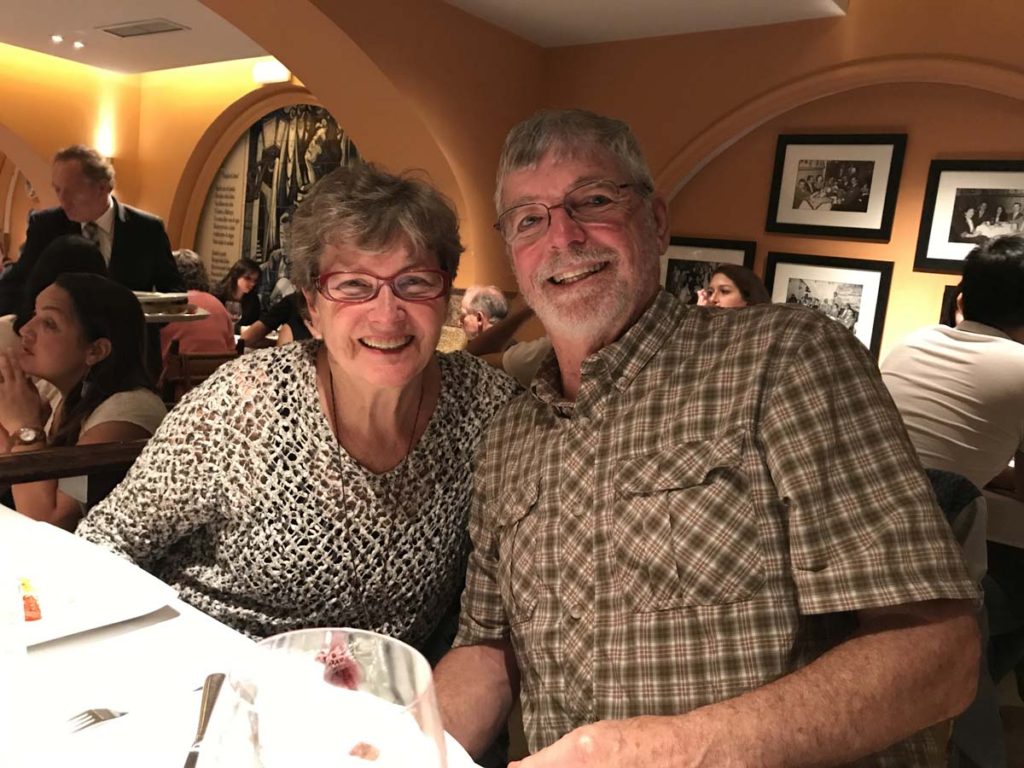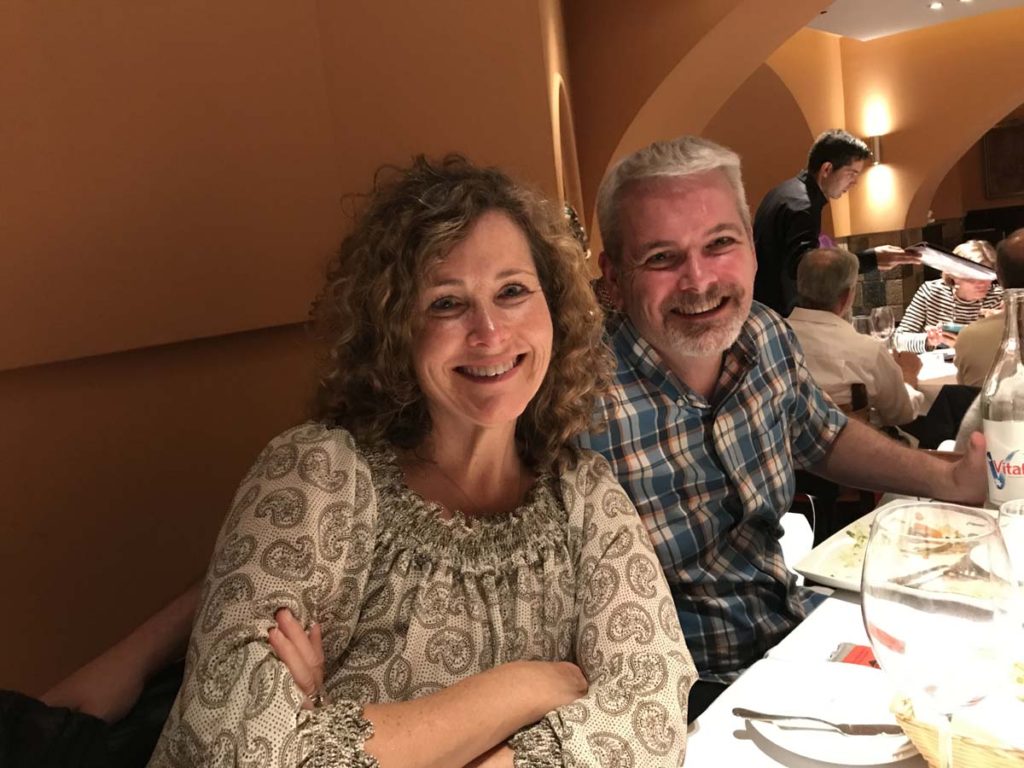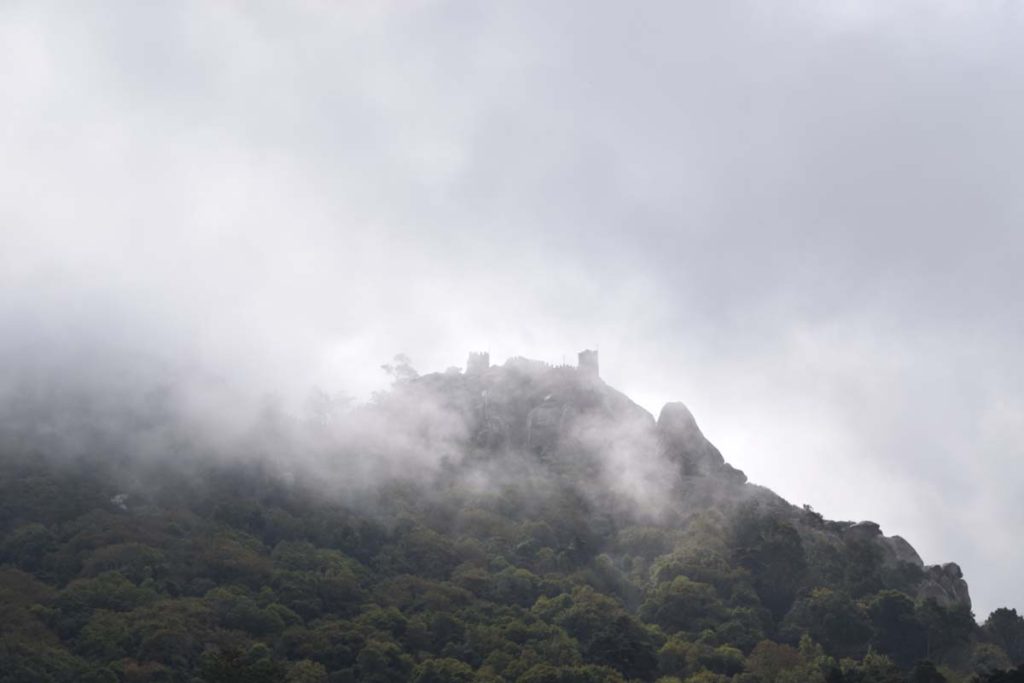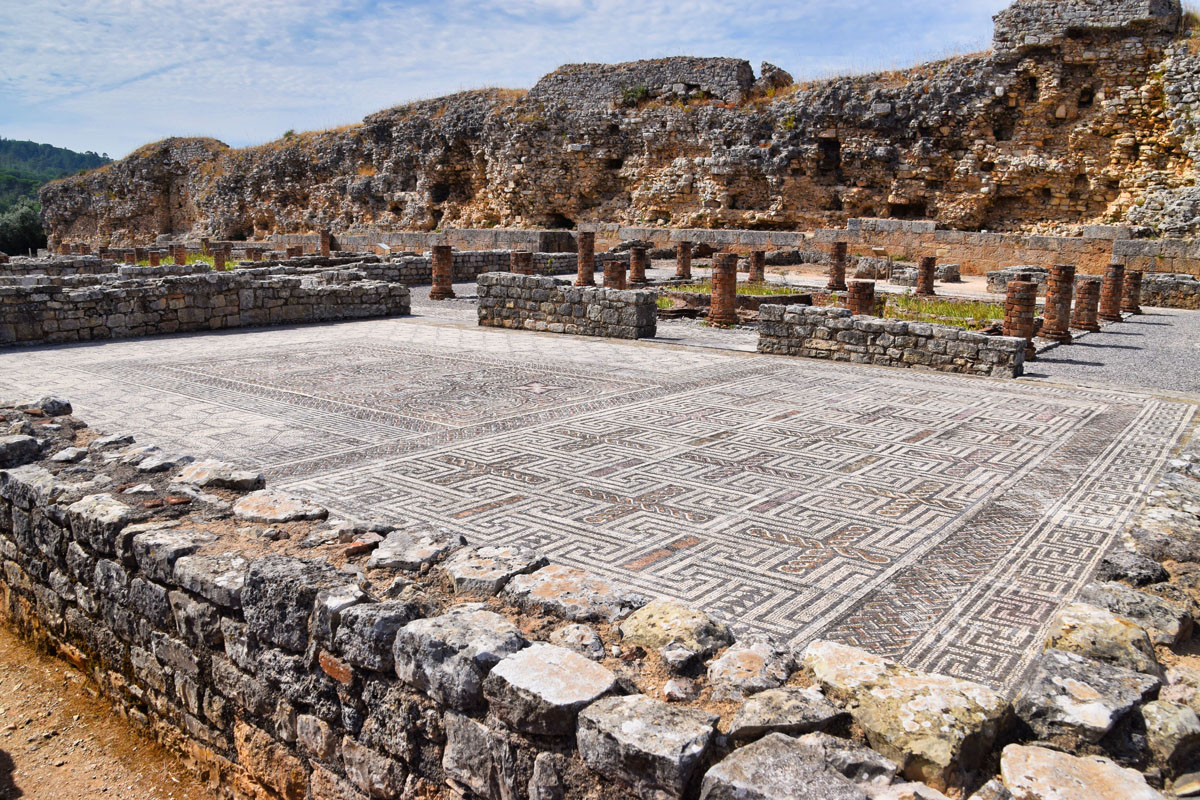Day 2 – Monday
After we all woke up and had breakfast, we headed to the lobby to meet our tour driver for the day. While I have been to Lisbon many times and know my own favorite places and attractions, I thought it would be good (given our limited time in Lisbon) to hire a driver who could take us around efficiently to some of the interesting places outside of Libson.
We were soon loading into the passenger van to head to our first destination – the picturesque town of Sintra, located about 25km (16 miles) outside of Lisbon.
Sintra
Sintra is a small, colorful town set among the pine-covered hills of the Serra de Sintra. This town used to be one of the favorite “second residences” for Portuguese nobles and the elite due to its cooler climate. They constructed palaces and manors (many in the colorful Romanticism style of architecture), as well as elaborate gardens that now make Sintra a wonderful experience for visitors.
Sintra: Pena Palace
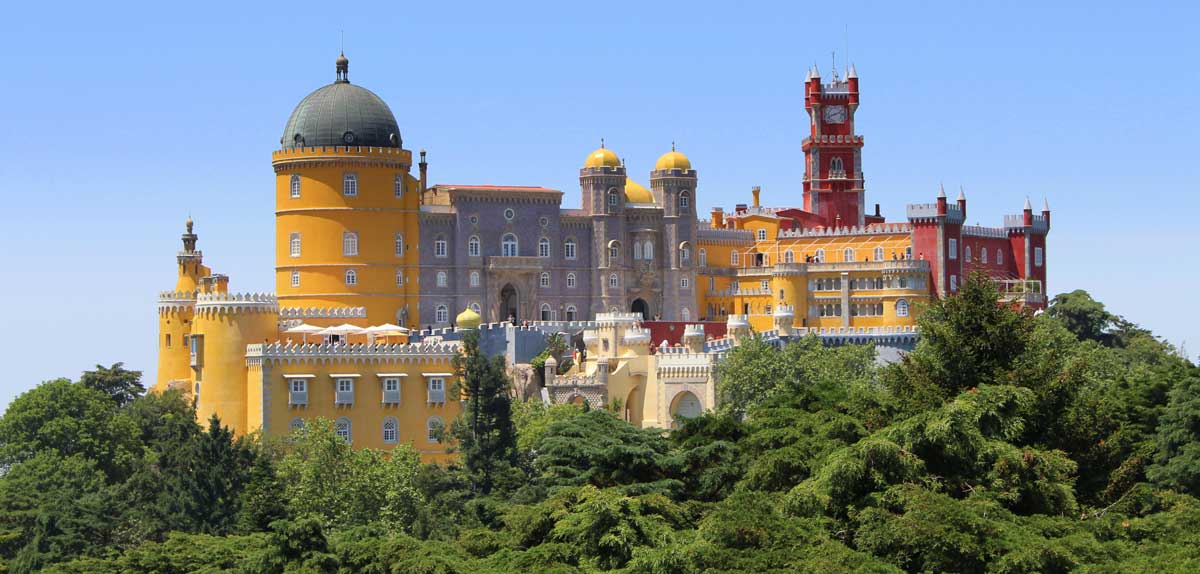
The Pena Palace’s history traces back to the Middle Ages when a chapel was built on the top of a hill in Sintra to honor Our Lady of Pena. In the early 1500s, a monastery was built on the order of King Manuel I. In the 1700s the monastery was damaged by lighting, but it was the massive Lisbon earthquake in 1755 that left the monastery in ruins.
In 1838, Prince Ferdinand (King Consort to Queen Maria II) decided to purchase the ruined monastery and much of the surrounding lands, including the a nearby medeival castle (Castle of the Moors) and some of the other buildings and estates in the area. He commissioned the construction of a palace to be built in the Romantic architectural style and was actively involved in design decisions during the palace’s construction between 1842 and 1854.
The palace was eventually purchased by the Portuguese State in 1889, and after the 1910 Republican Revolution, it was declared a national monument and turned into a museum. Modern renovations returned the interior of the palace to its 1910 appearance, and after decades of fading to almost grey, the vibrant exterior walls were returned to their proper colors.
In 1995, the Palace and Sintra were classified as a World Heritage Site by UNESCO.
The bright colors of the palace were somewhat subdued on our visit due to the large amount of fog surrounding the palace. It gave this fairy-tale palace a mystical appearance, which just made the visit more enjoyable.
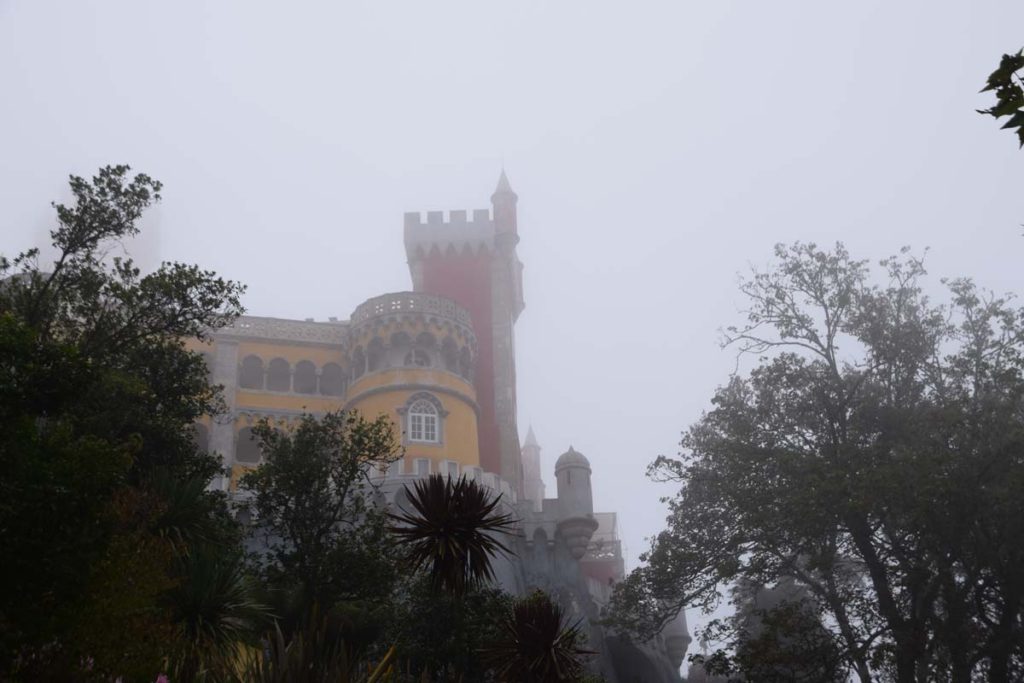
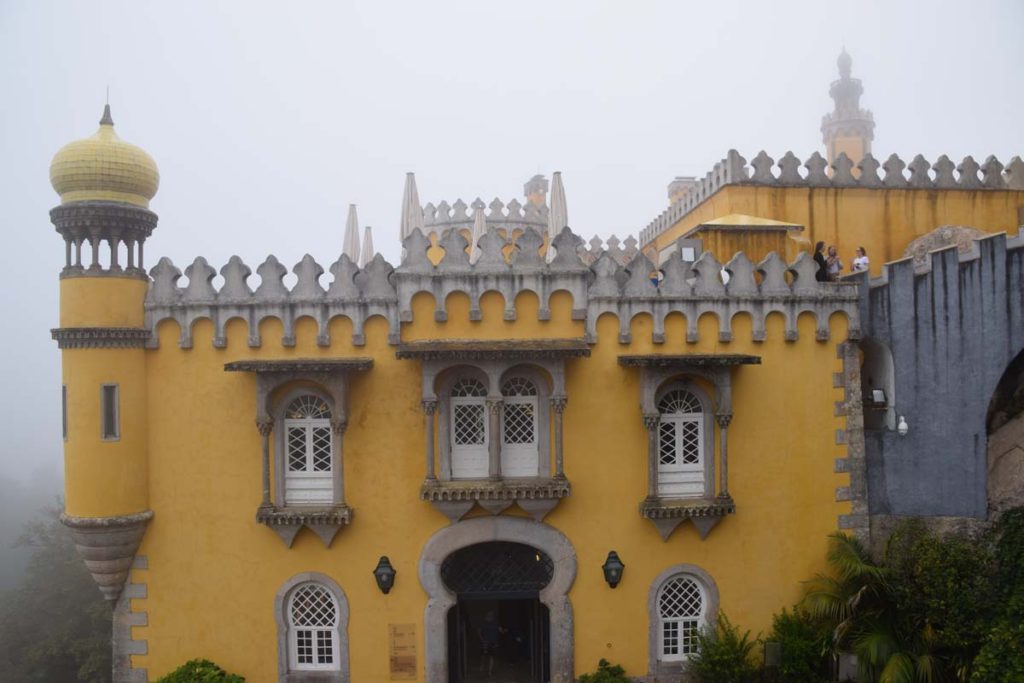
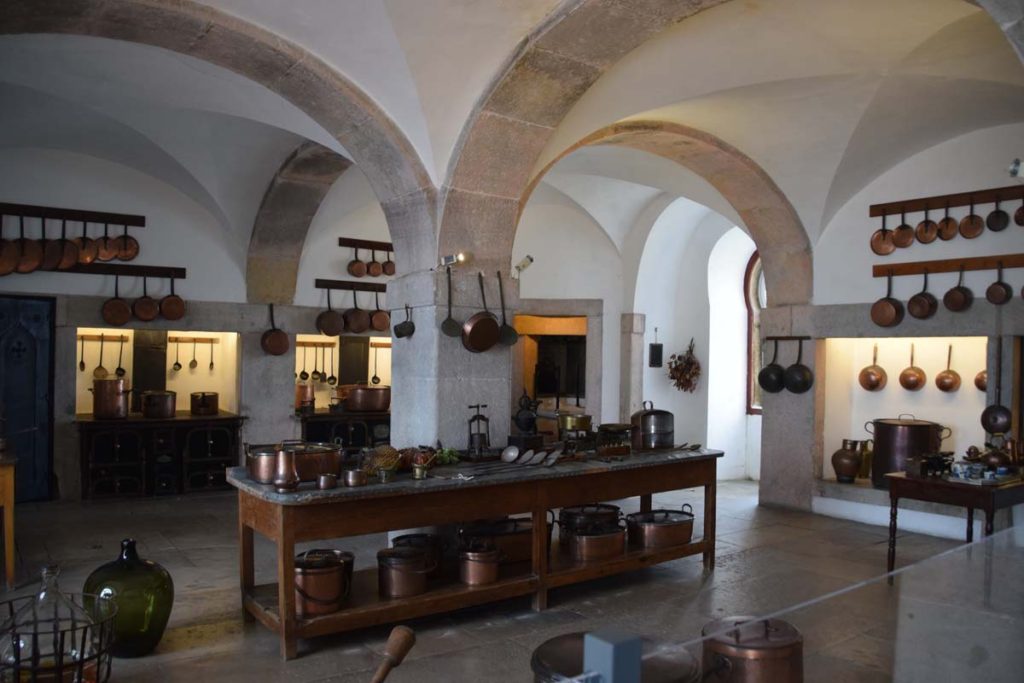
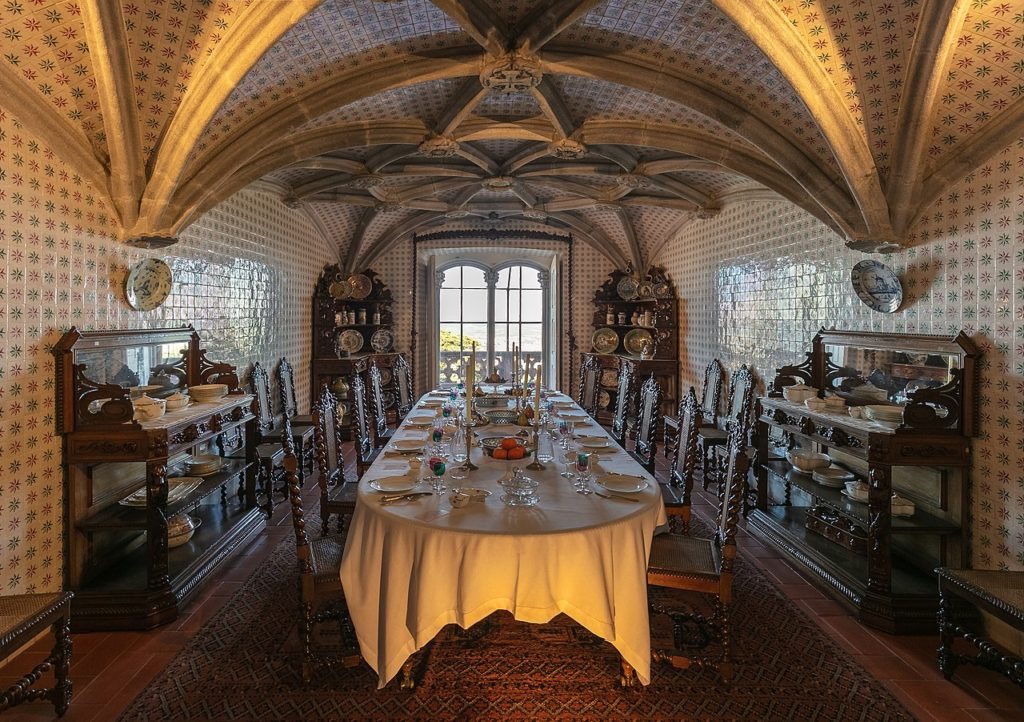
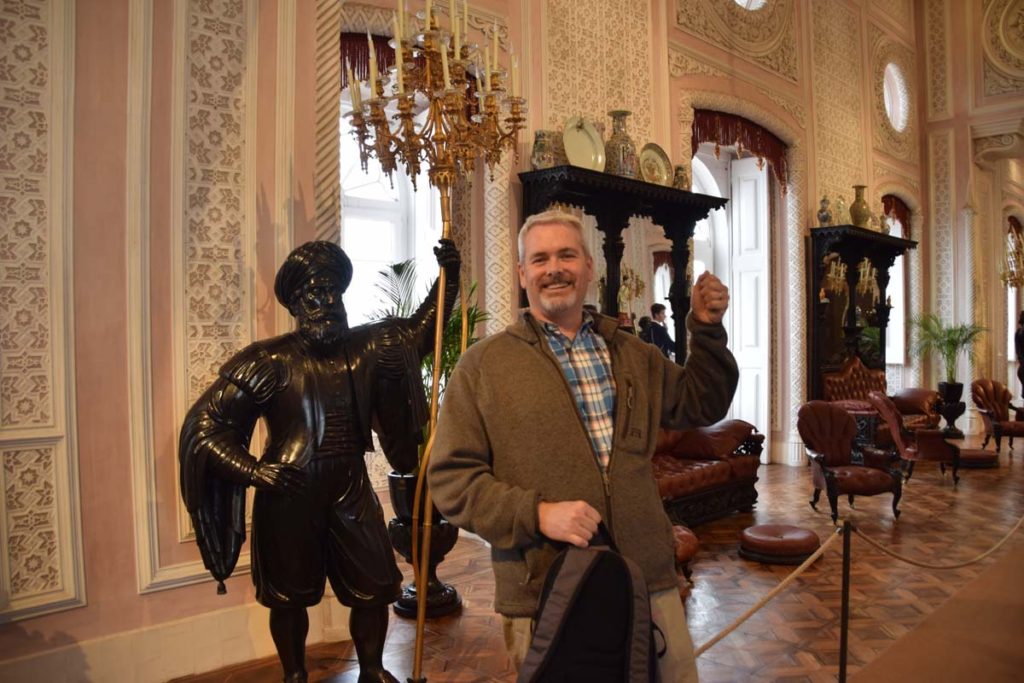
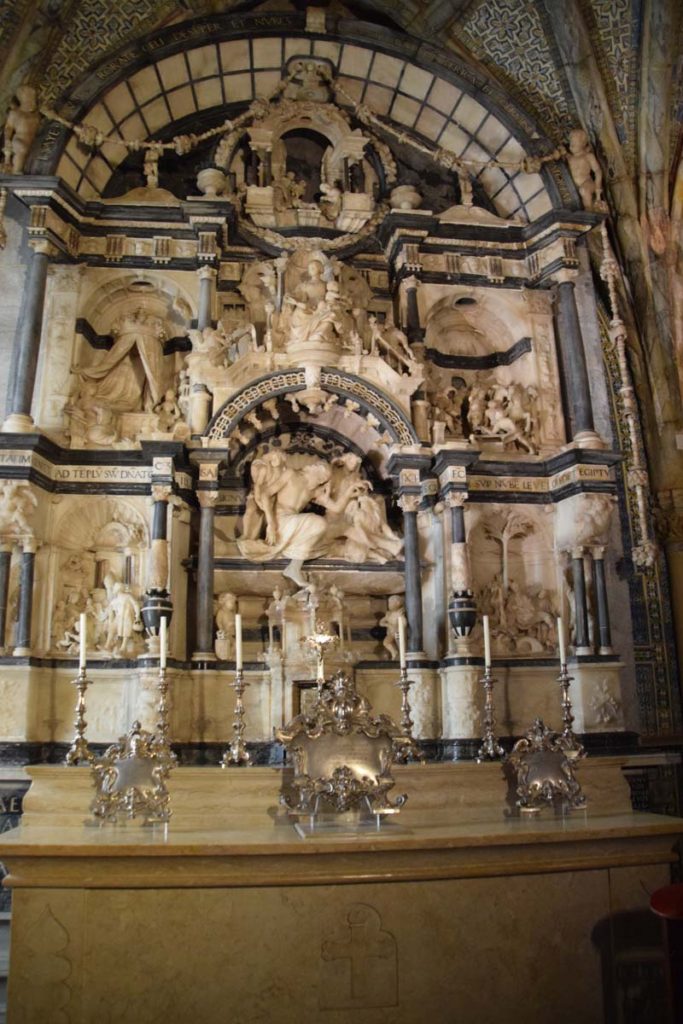
Sintra: The National Palace
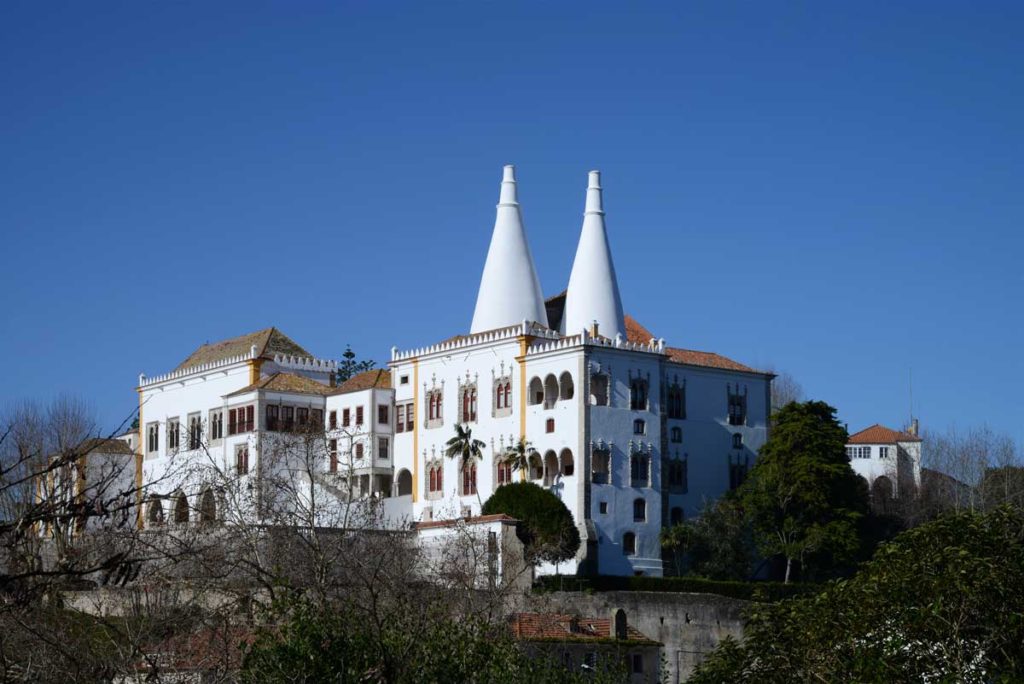
The Palácio Nacional de Sintra (Sintra National Palace) is a castle and royal palace that was built on the site of a Moorish castle. Some of the earliest references are from the 12th century, where “Sintra Castle” is mentioned in relation to King Alfonso Henriques’ conquest of the Moors, and his claiming the castle for his own. It was occupied mostly continuously from the early 15th century to the last of the 19th century.
The castle is a blend of several architectural styles, including Gothic, Manueline, Moorish and Mudéja, likely the result of construction projects over the centuries. Notable are the two large chimneys connected to the kitchen.
Nothing built during the period of the Moorish rule or the first Portuguese Kings survives. Still, the Royal Chapel is likely the oldest surviving part of the castle, possibly built during the reign of King Dinis I in the early 14th century.
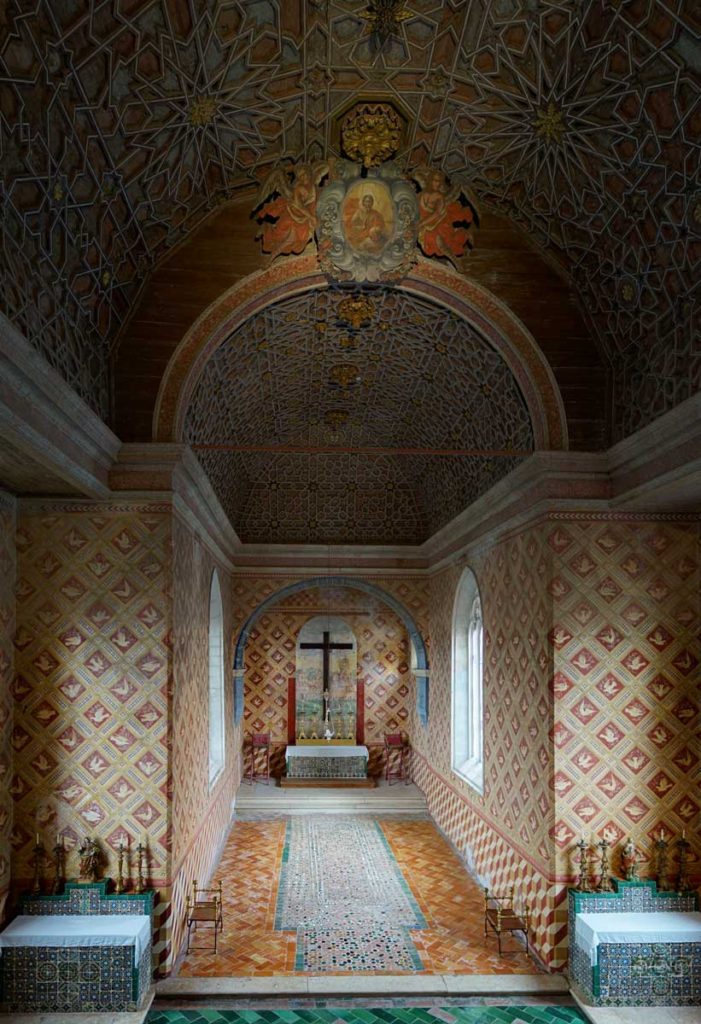
King Manuel I sponsored a building campaign between 1497 and 1530, which included the creation of the Coats-of-Arms Room (Sala dos Brasões), which has a wooden domed ceiling decorated with 72 coats-of-arms of the King and the main Portuguese noble families. The blue azulejos tiles were added in the 18th-century.
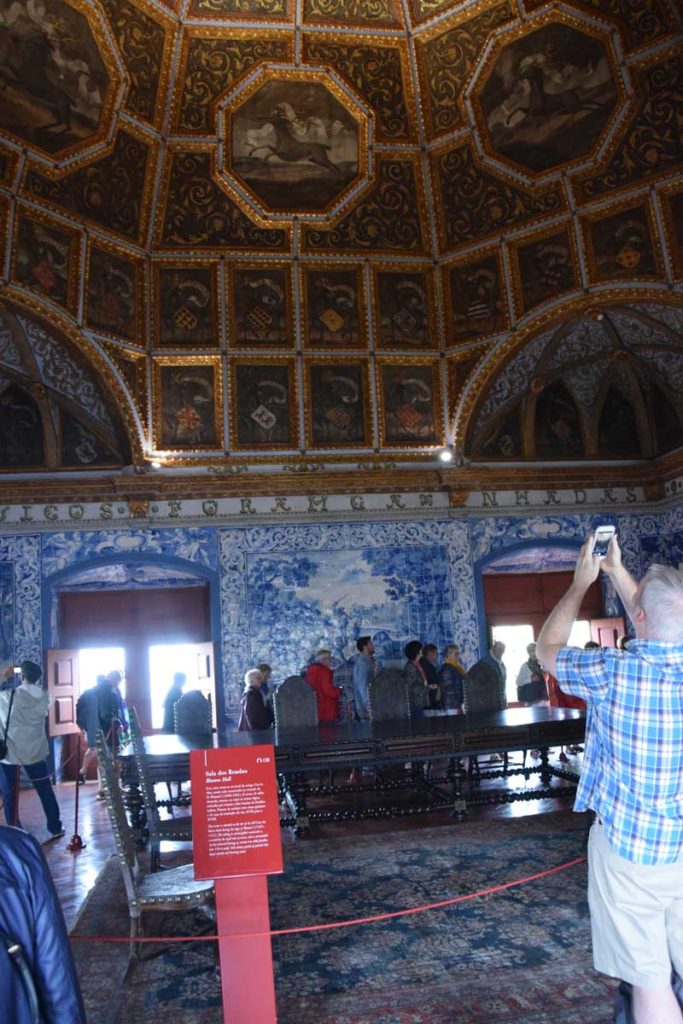
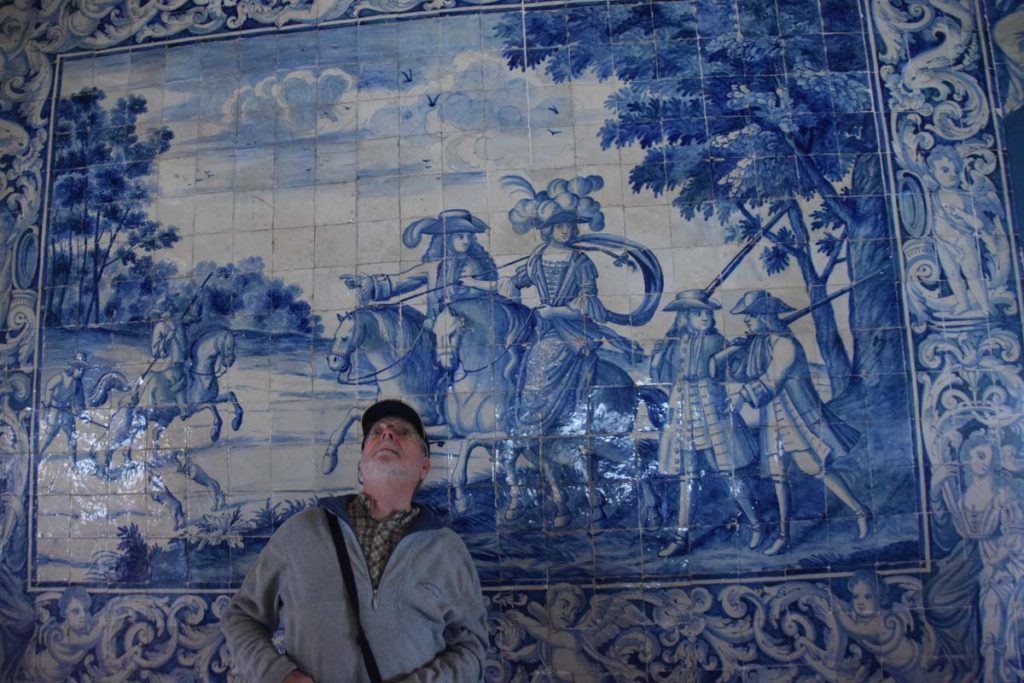
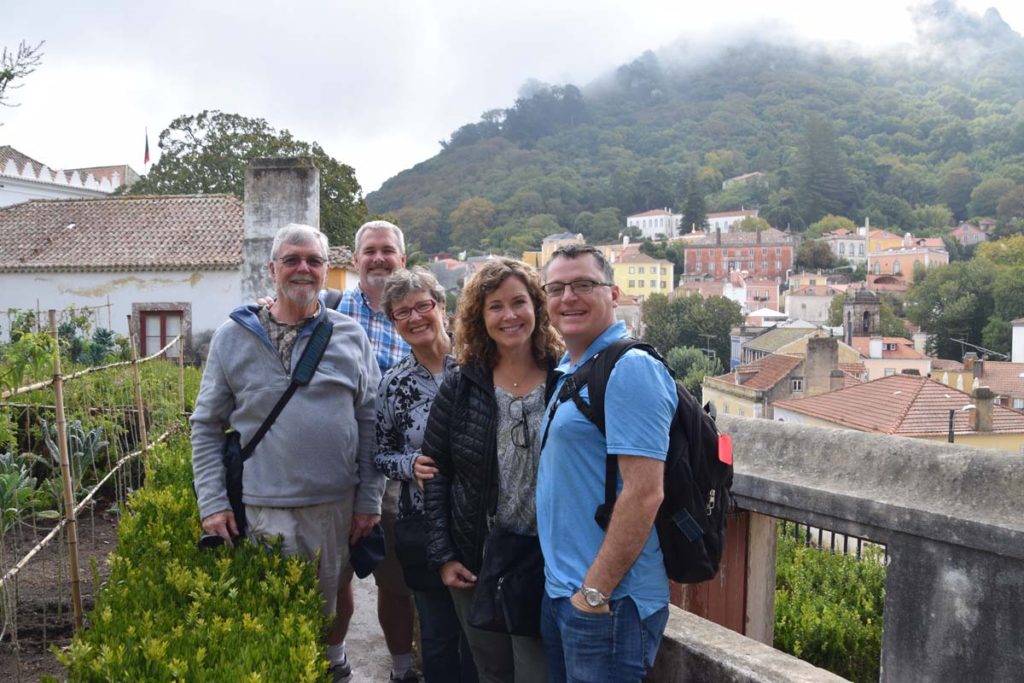
Sintra: Castle of the Moors
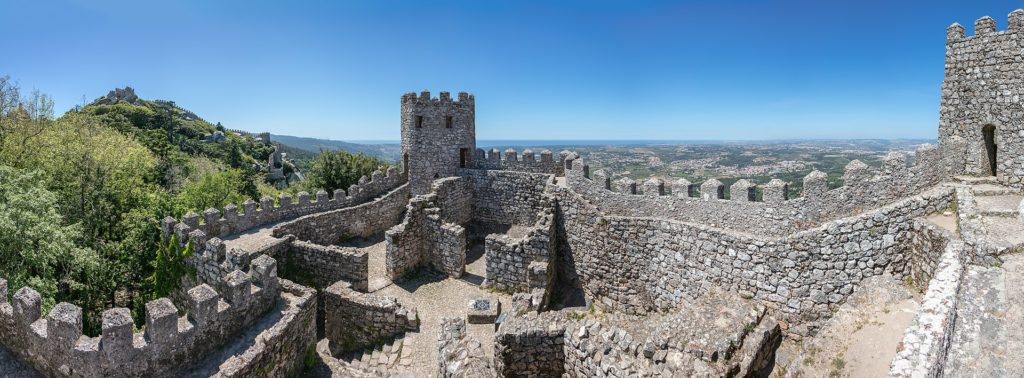
The Castelo dos Mouros (Castle of the Moors) is a Medieval castle built on top of a tall hill overlooking Sintra. It was constructed by the Moors in the 8th and 9th centuries and was conquered by Christian forces after the fall of Lisbon in 1147.
While we didn’t go up to visit the castle given our tight timelines, it was quite impressive to see the walls and remaining towers standing sentry on top of the hill in the misty afternoon. The castle is mostly in ruins, but conservation has kept the castle and walls in good shape and I would love to pay the castle a visit on my next trip to Lisbon.
Sintra: Quinta da Regaleira
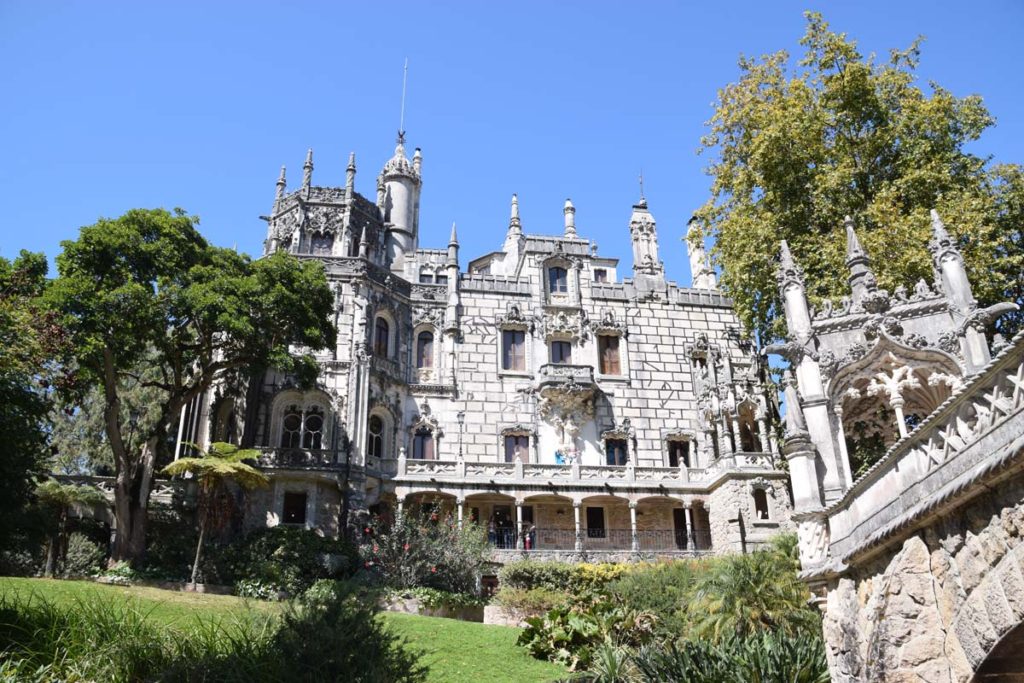
Quinta da Regaleira is one of the more unusual palaces that I think I have ever been to. The architecture of the Quinta is beautiful, but It is built primarily in the Romantic architectural style, but it is the amazing grounds surrounding the estate where the most unusually wonderful creations can be found.
The land was purchased in 1892 by a gentleman named Carvalho Monteiro who wanted to build a fantastical estate full of symbols and architectural styles that he was interested in. He hired an Italian architect to create the 4-hectare estate.
The design reflected all types of symbols related to the Knights Templar, the Masons, and alchemy. It included several architectural styles including Gothic, Roman, Manueline, and Renaissance. Construction began in 1904 and took six years to complete.
The estate was sold in 1942, again in 1987, and finally to the Sintra Town Council in 1997. It underwent an extensive restoration and opened to the public in 1998.
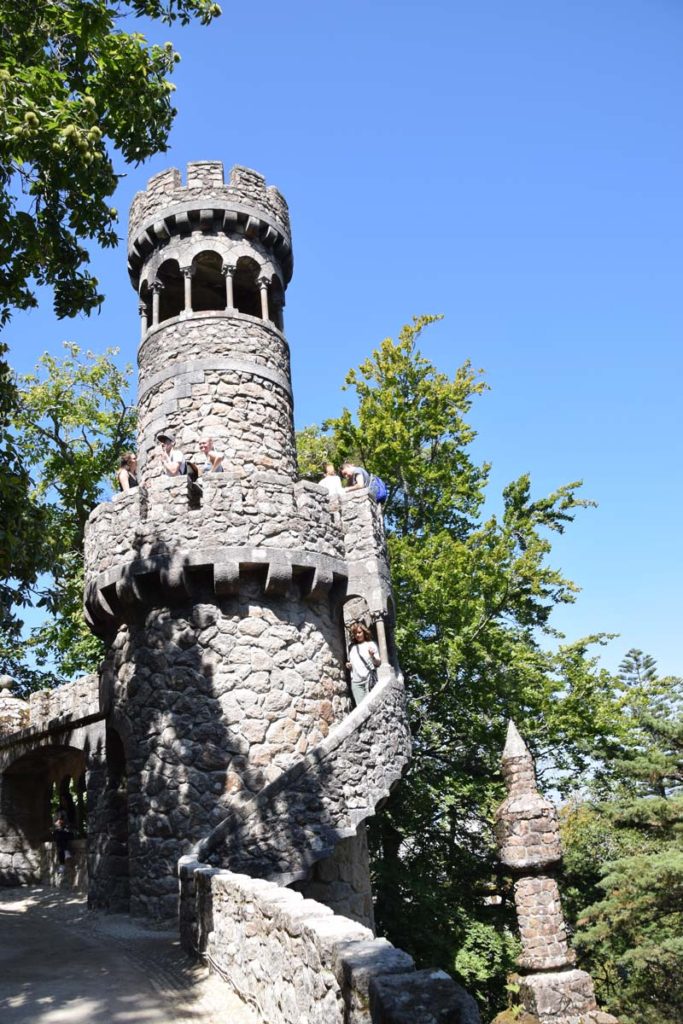 |
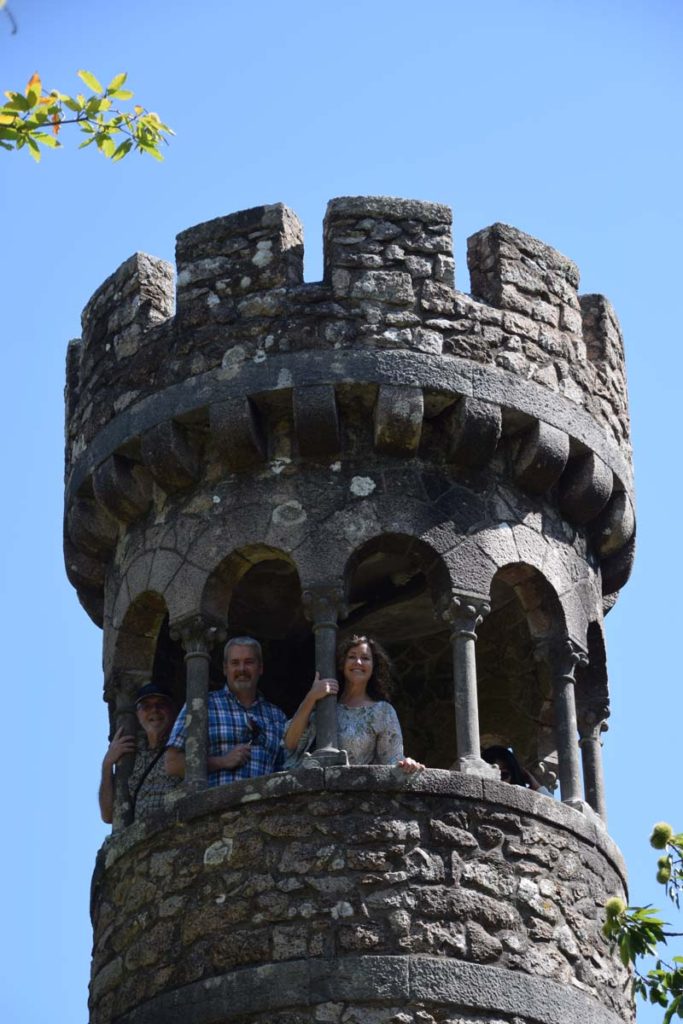 |
The Initiation Wells are like two buried towers with spiral stairs staircases that descend into the earth and are connected by tunnels. They were used for ceremonial initiation purposes – one of the two wells has a 90-foot-deep spiral staircase with small landings that are related to Tarot mysticism. The other well (called the “Unfinished Well”) may have in its design references to Freemasonry or Knights Templar rituals.
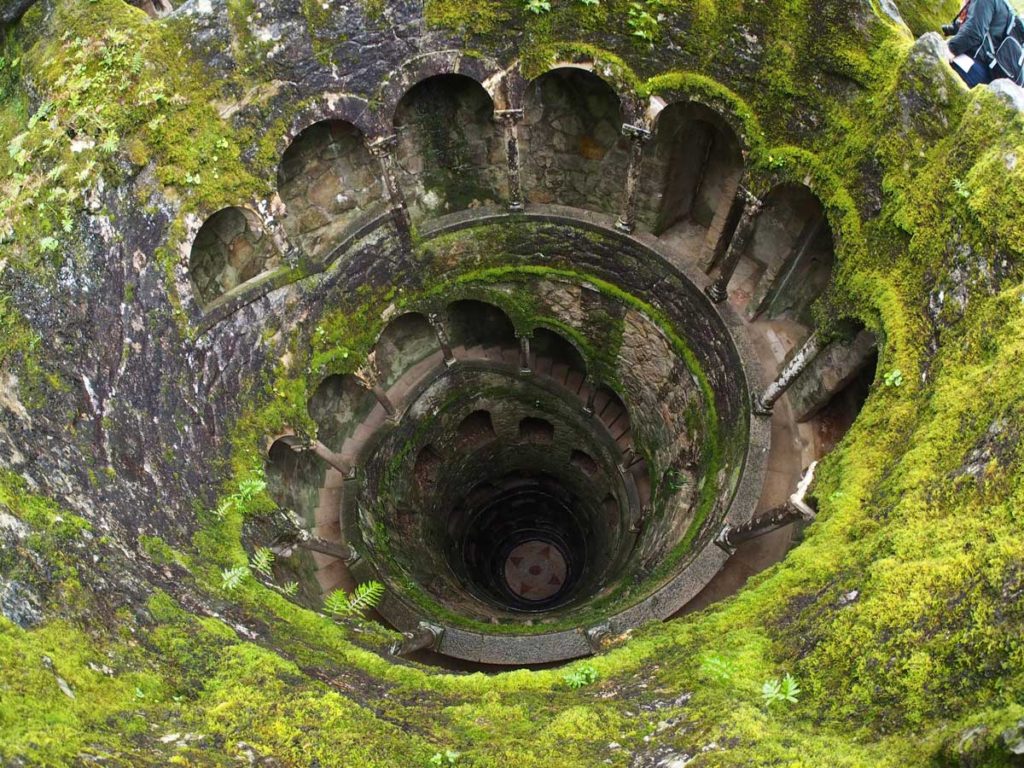
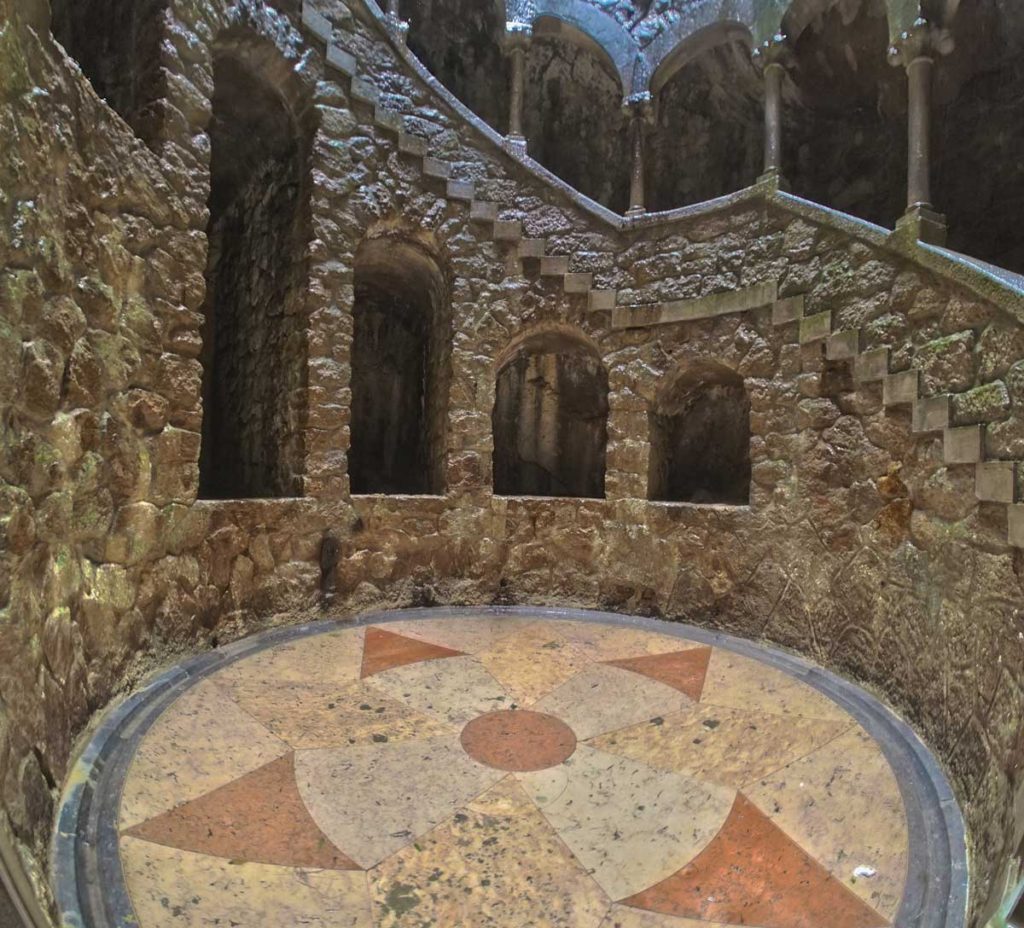
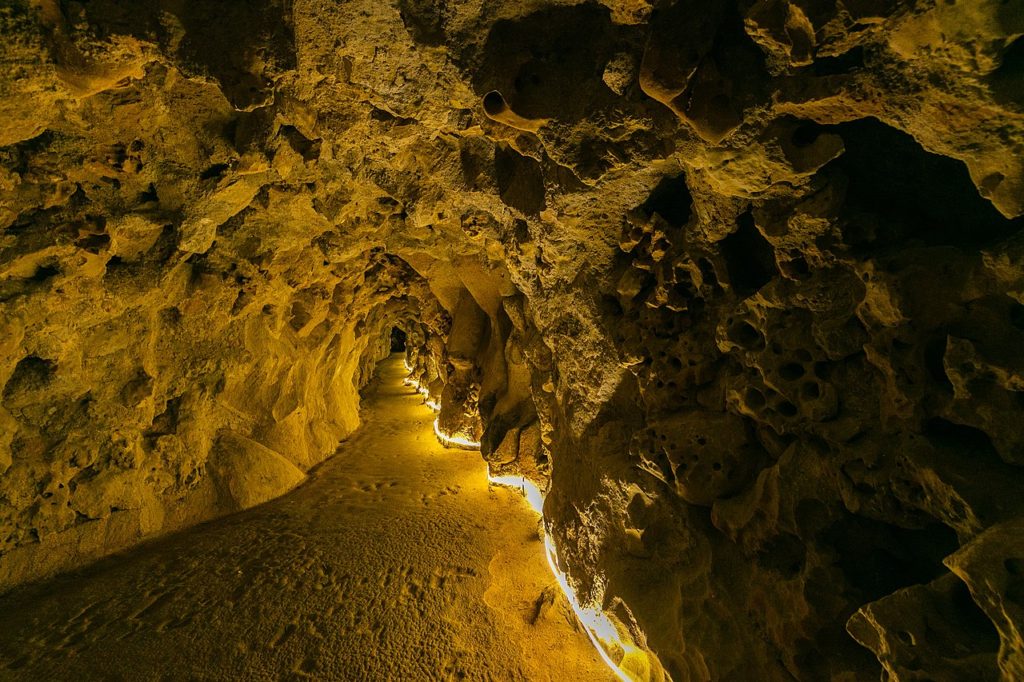
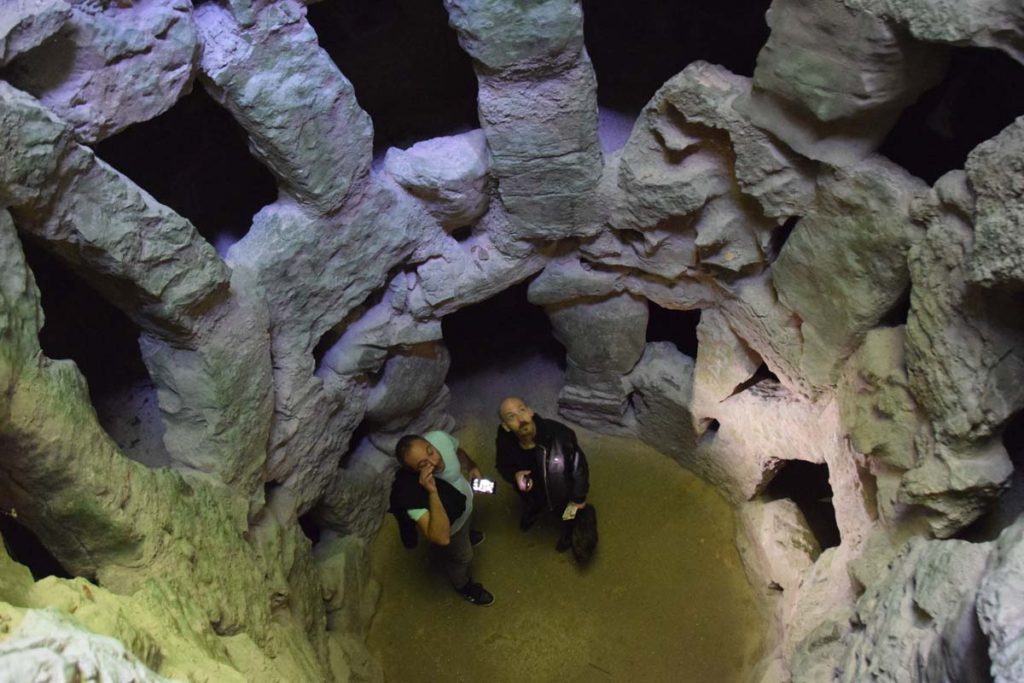
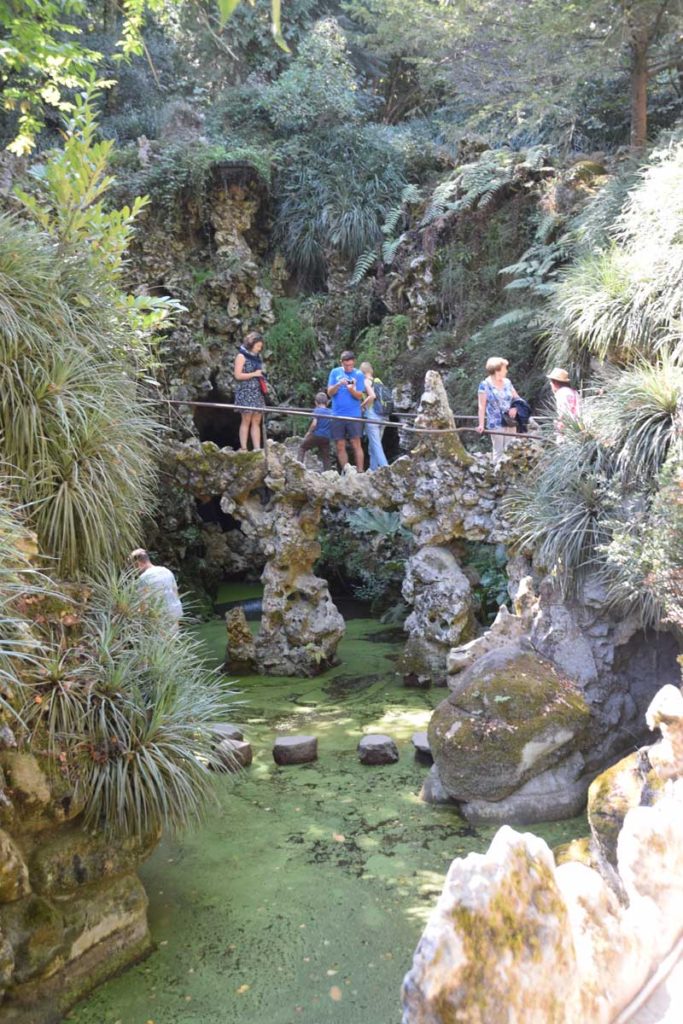
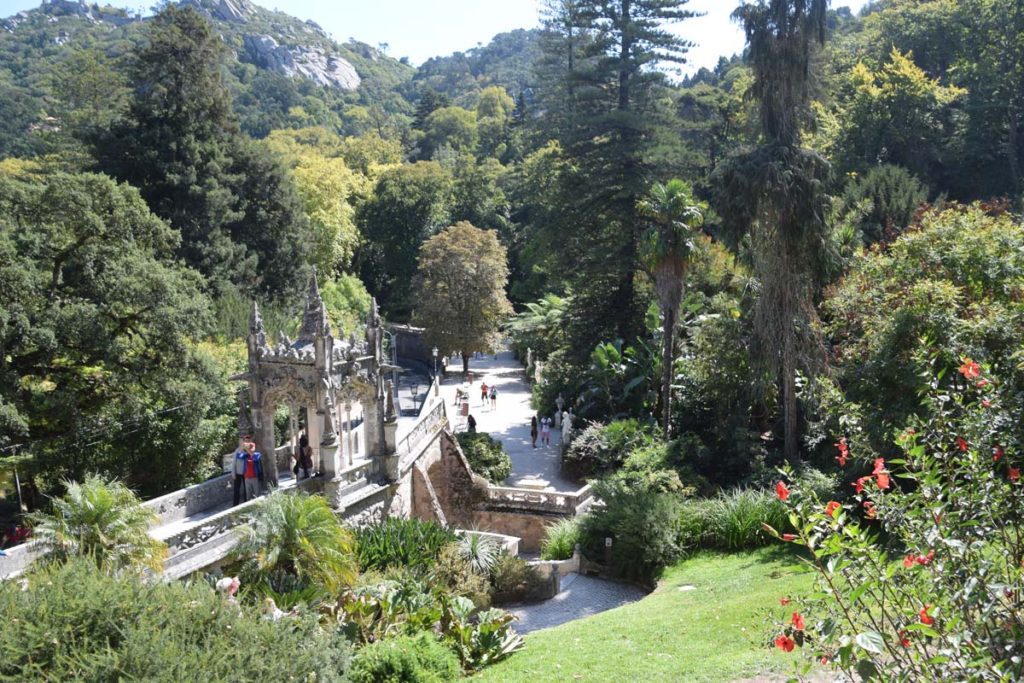
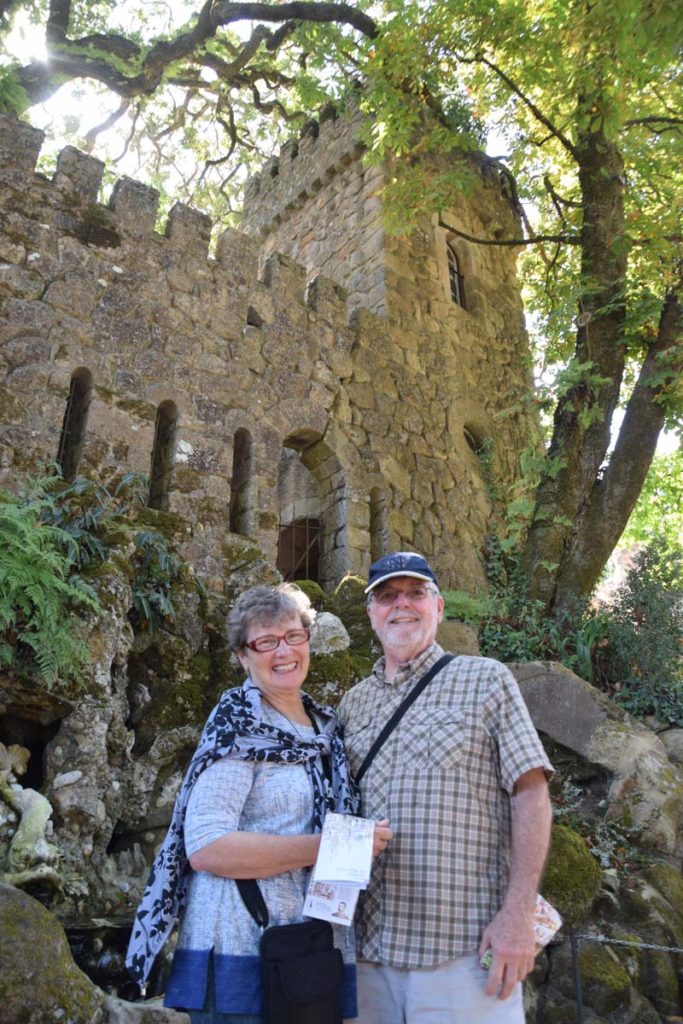
After a few hours of walking around the grounds, exploring the tunnels and whimsical structures, we had all worked up a pretty good appetite, so our driver recommended a place close by for some lunch: Taco do Julio.
Taco do Julio
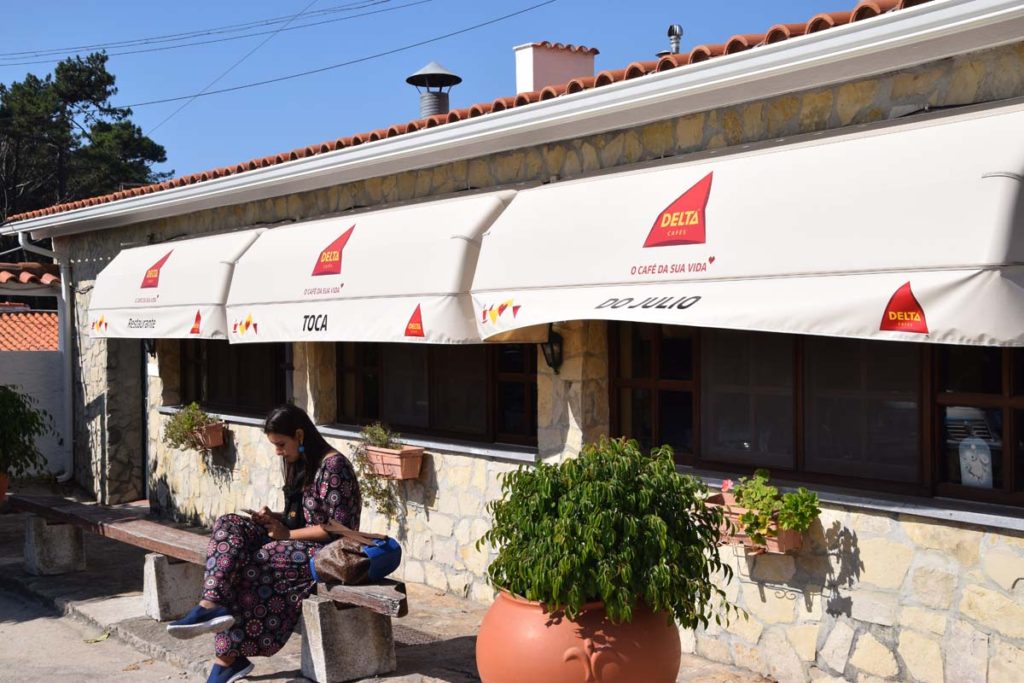
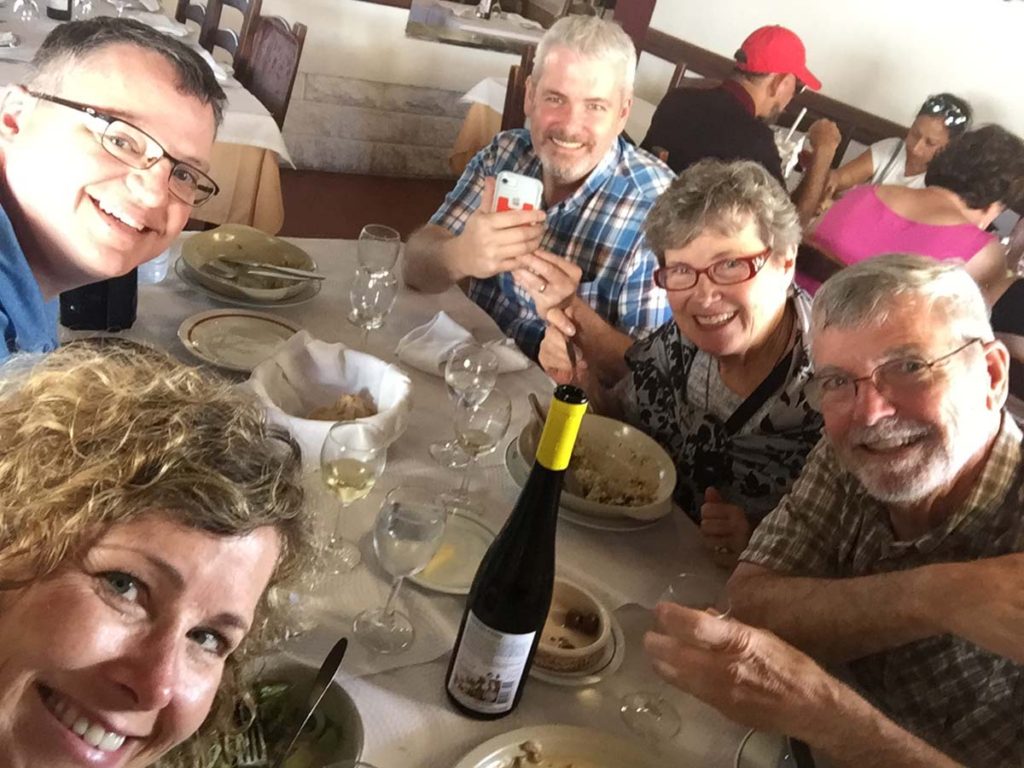
The food hit the mark and we were soon refreshed and loading back into the van to head out on a lovely drive down the coast, stopping along the way to see several attractions.
Praia Grande
Our first stop was Praia Grande (“Long Beach”), a beautiful 2 kilometer stretch of sandy beach that is considered one of the best beaches in Portugal for surfing and bodysurfing. Several European surfing championships as well as World Bodyboarding Championships have been held here.
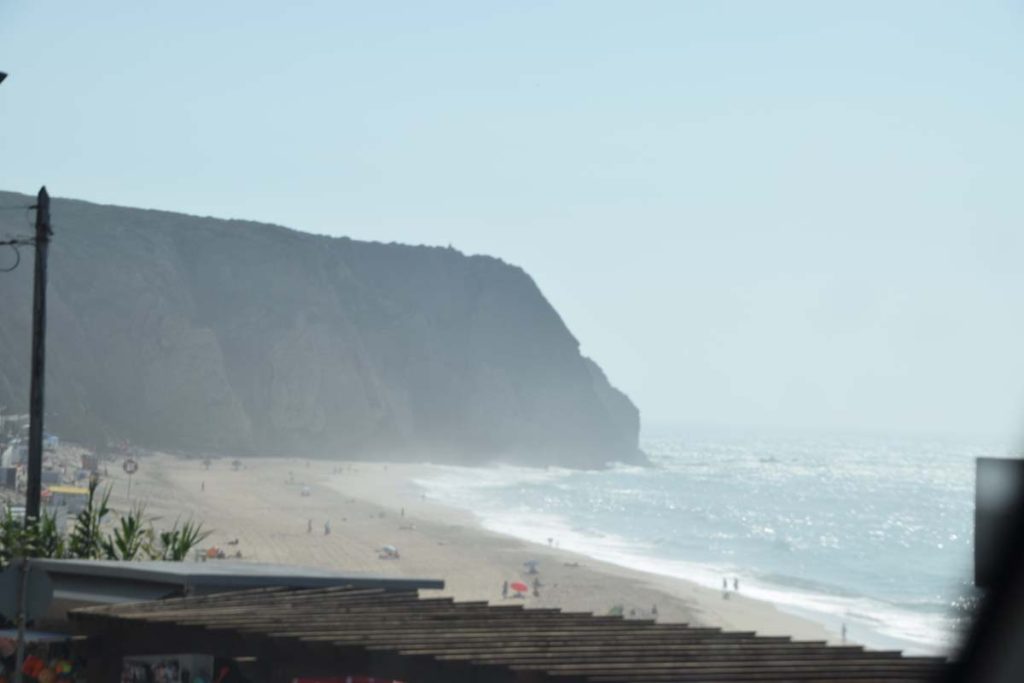
We stopped at that Arribas Sintra Hotel to bet a close look at the beach below, but also noted what is thought to be the largest saltwater swimming pool in Europe (over 100 meters – a little over 100 yards – long).
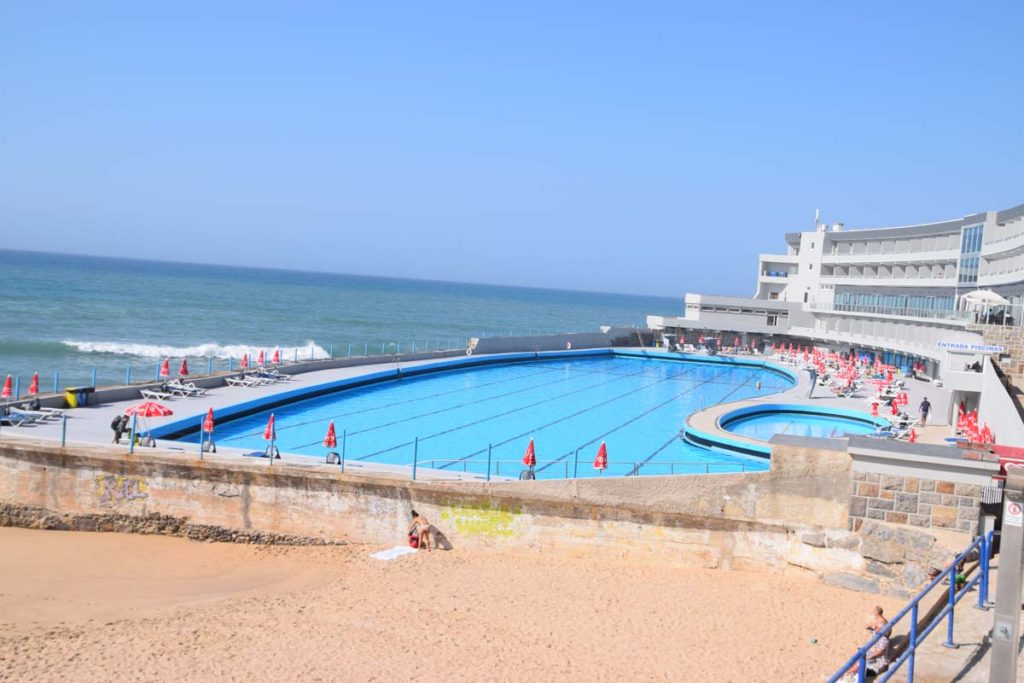
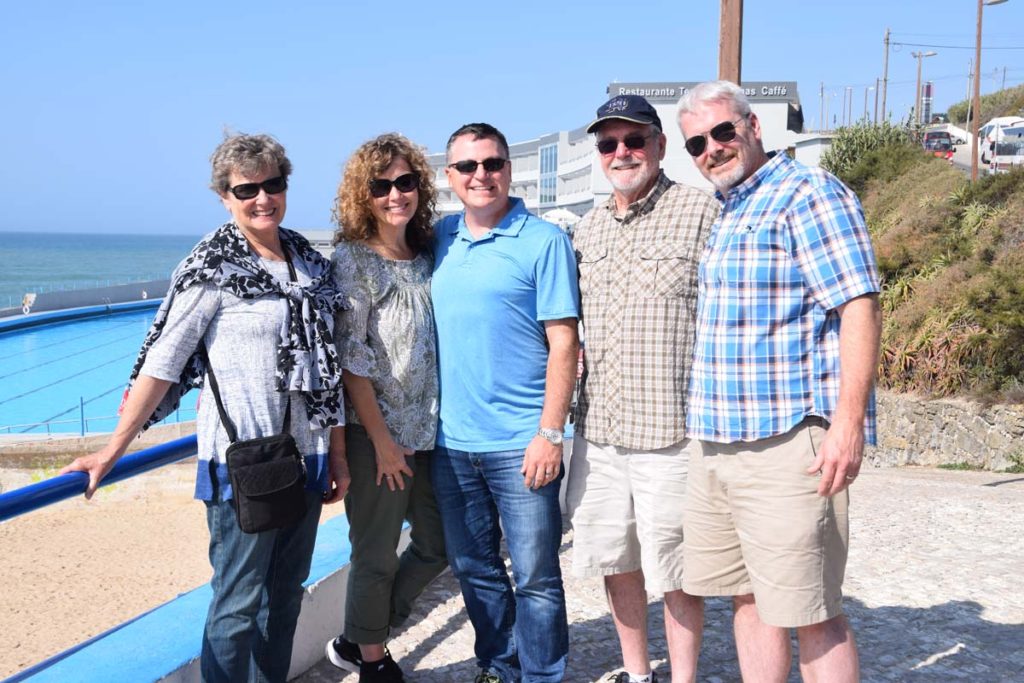
Cabo da Roca
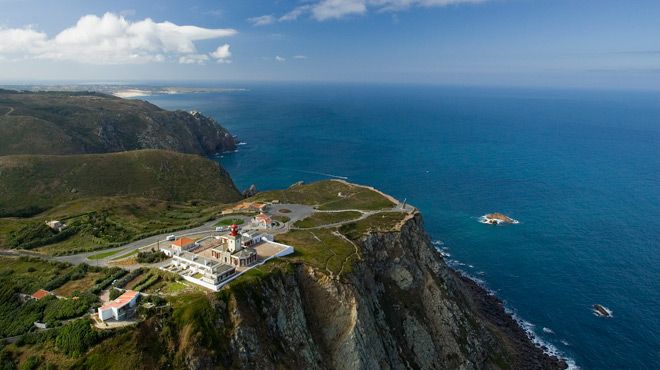
Cabo da Roca (“Cape Roca”) is a cape that is the westernmost point of continental Europe. It features the Cabo da Roca Lighthouse, a 540-foot tall lighthouse that first began operation in 1772.
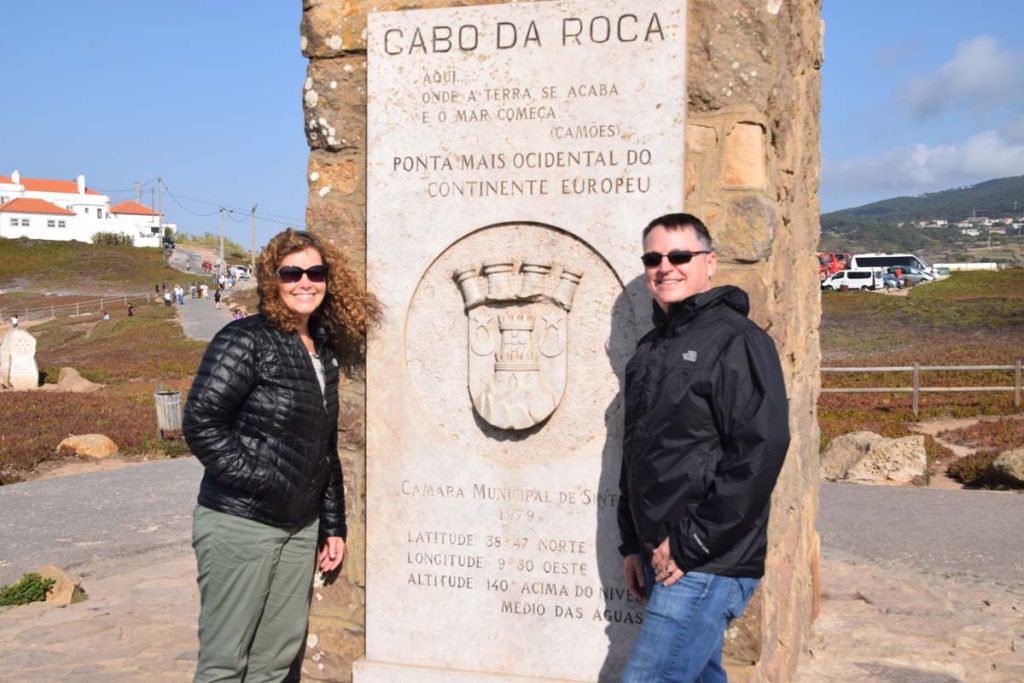
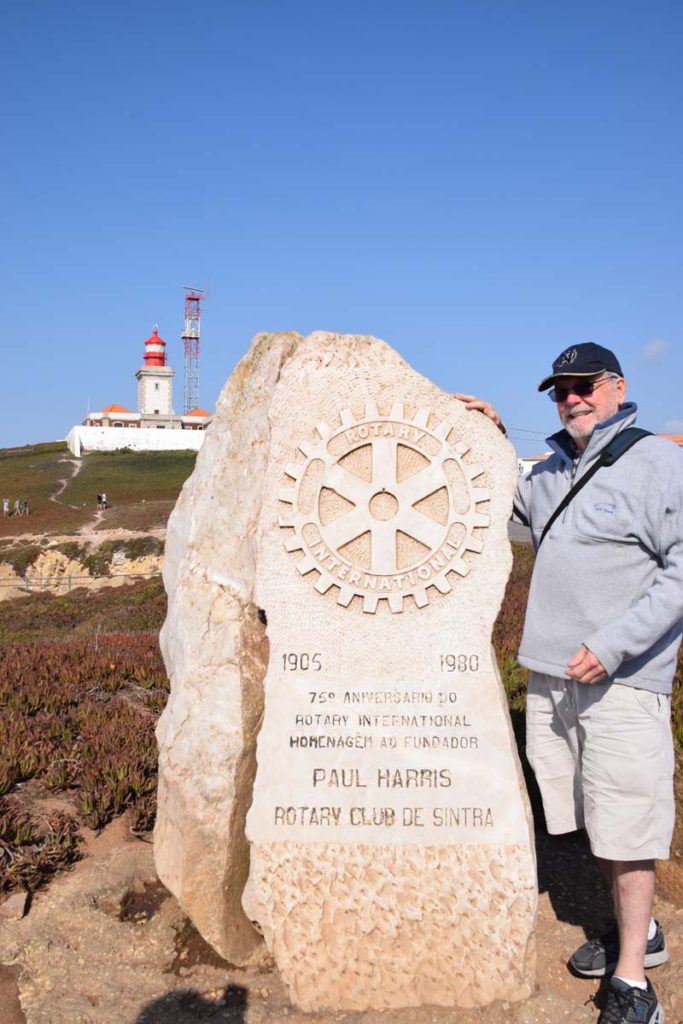 |
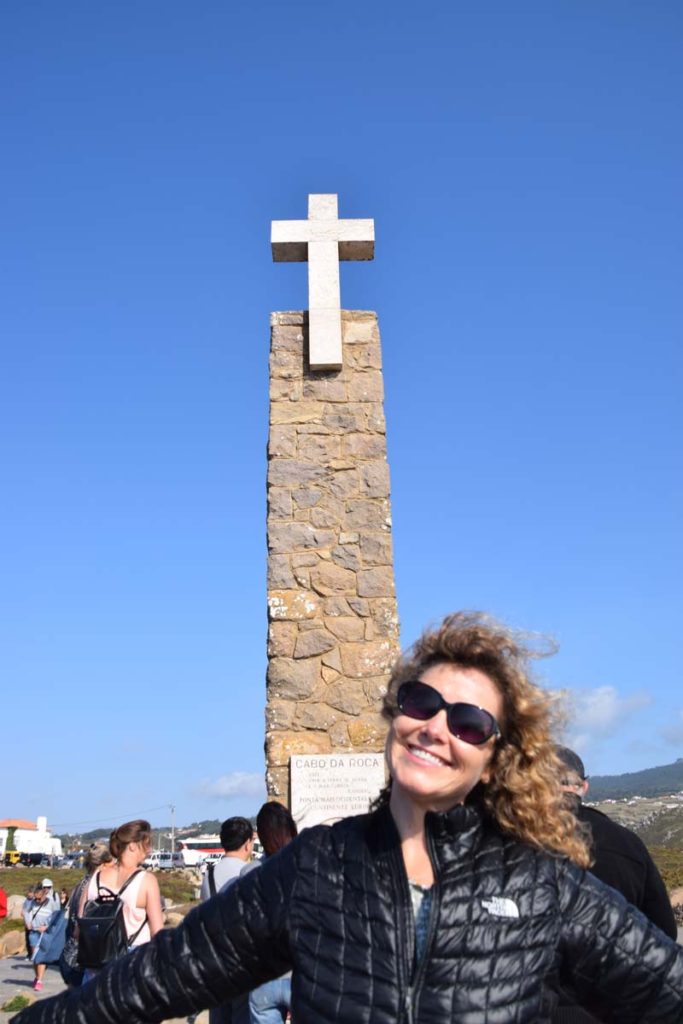 |
Cabo da Roca wrapped up the last stop on our tour. It was a great way to cover a lot of ground in a day, and we thoroughly enjoyed seeing a few of the “off the beaten path” sites outside of Lisbon.
We were dropped back off at the hotel and had a little while to relax and get ready for a special Fado dinner.
O Faia Casa de Fados
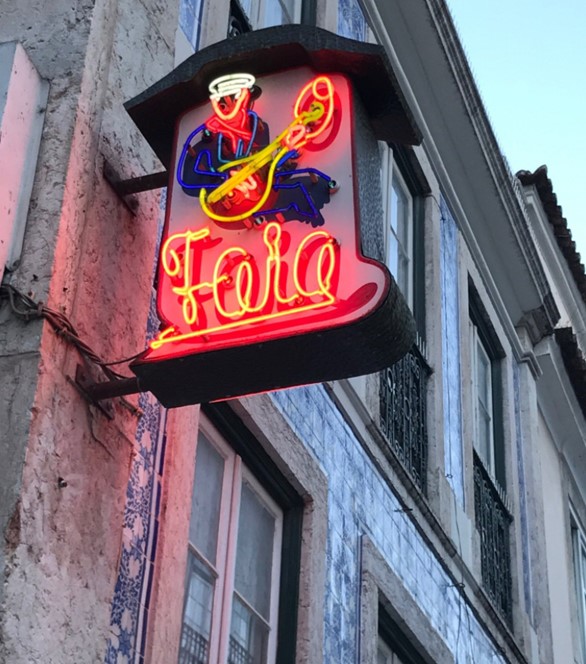
Tonight, we would be having dinner at O Faia Casa de Fados, a Fado Restaurant that was recommended to me by a friend.
Fado music can be traced to the 1820s in Lisbon, Portugal, but probably has much earlier origins. It is a style that is marked with mournful melodies and lyrics and is imbued with a sense of “Saudade” – longing or feeling of missing someone or something. Fado was added to the UNESCO Intangible Culture Heritage Lists in 2011.
No photography or recordings were allowed during the show, but it was a wonderful experience to hear such soulful music and enjoy a delightful meal and evening.
